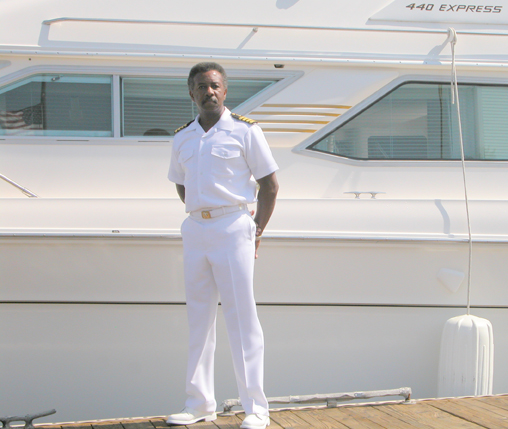“Facing west from California shores, inquiring, tireless, seeking what is yet unfound, I, a child, very old, over waves, towards the house of maternity, the land of migrations, look afar.” – Walt Whitman (1860)

Captain Johnny Lee now skippers a 48-foot Sea Ray, called Great Faith and during busy summer weeks does a burial a day. He charges $450-500, depending on which harbor he cruises from; burying a casket in the ground can cost $10,000.
Walt Whitman grew up in New York City and traveled to California as a young man. He penned this passage long before his death, but for many Californians, the Pacific Ocean that inspired this poetry is not just a symbol of manifest destiny but an expression of ultimate destiny.
“Due to the number of ‘transplanted’ residents in California, many of them have no affinity to a cemetery with an urn garden or columbarium,” said Kevin Hacke, executive director of the Cremation Association of North America (CANA). “Many folks moved to California for proximity to the ocean, so families look at scattering at sea as a logical final disposition of their loved ones.”
Sea scattering or the burial of human remains at sea, a tradition oft used by the United States Navy, has gained popularity amongst civilians in the past several decades, at least in California. “Great Lakes states are more likely to have a relationship with a cemetery,” said Hacke.
The trend may be linked to an increase in cremations. Just thirty years ago, full-body burials were the norm, and only about 5 percent of Americans were cremated, according to CANA statistics. By 2006, cremation rates had jumped to 34 percent. But just how the rise in cremations may have influenced sea scatterings is unknown; many families distribute cremated remains on their own, and these actions are tough to track.
Guidelines for sea burials vary. In general, across the United States, full bodies can be deposited at depths greater than 600 feet and urns and ashes must be dropped at least three miles from shore. But in Great South Bay, in New York, ashes can be scattered from the edge of a dock, and in many California communities ashes can be scattered freely in navigable waters more than 500 yards offshore.
“That’s just not enough privacy for me and my families,” said Captain Johnnie Lee, who runs a burial at sea service out of Long Beach and Huntington Beach, in southern California. “You don’t want to have ashes splash back on earth, and you don’t want to be so close that an urn washes back on shore,” said Lee, who typically motors a mile and a half to two miles offshore before scattering.
For five years Lee skippered a boat that towed distressed vessels into harbor but in 2003 the company he worked for cut their entire West Coast fleet. A friend suggested sea scattering. “I decided that it was time for a change in my life,” said Lee.
He purchased a seaworthy boat, acquired a Cremated Remains Disposal License and bought a captain’s uniform. Lee now skippers a 48-foot Sea Ray, called Great Faith and during busy summer weeks does a burial a day. He charges between $450 and 500, depending on which harbor he cruises from; burying a casket in the ground can cost $10,000.
Some family members provide GPS coordinates of where past loved ones have been scattered. Often, Lee chooses the spot. Eulogies are recited and if a religious leader is present they will say a prayer, Buddhists monks have been aboard Great Faith, as have Catholic priests. Lee provides the option of a mariner’s prayer, which he says is non-denominational. He places the ashes or urn in a tightly wound wicker basket with rose petals and lowers it beneath the waves. Upon request, Lee will loop Great Faith around the deposition.
“The ashes will go whichever way the current is going to take them,” said Lee, “but the rose petals float.”
It’s a lyrical send off, and one Walt Whitman never saw. He died in 1892 and was buried in a tomb in Camden, New Jersey; his remains were later moved into a mausoleum.
In his poetry can be found a much more seaworthy ending:
“Look off the shores of my Western Sea—the circle almost circled…Long having wander’d since—round the earth having wander’d. Now I face home again—very pleas’d and joyous; But where is what I started for, so long ago?”










Olivia Smart
Thank you for explaining that urns and ashes have to be dropped at least three miles from shore. My uncle has been talking about how he wants to be buried at sea. I didn’t realize that this was possible, but it’s good to know what the regulations are before we start planning everything out.
Wooden Ships
I recently read online the fact that the USS Nimitz will probably be permanently based in Everett soon. If anyone lives close to there, be sure to check it out- this particular vessel is truly awesome!